
A low residue diet can be essential for people who need to reduce the amount of waste their digestive systems process. I believe finding the right recipes is crucial to maintaining a balanced and enjoyable eating plan while following this diet. This article will present ten of the best low residue diet recipes that are both nutritious and satisfying.
These recipes will help you manage your dietary needs without sacrificing flavor. I aim to provide simple and delicious options that can make following a low residue diet easier and more enjoyable.
1. Baked Cod with Vegetables
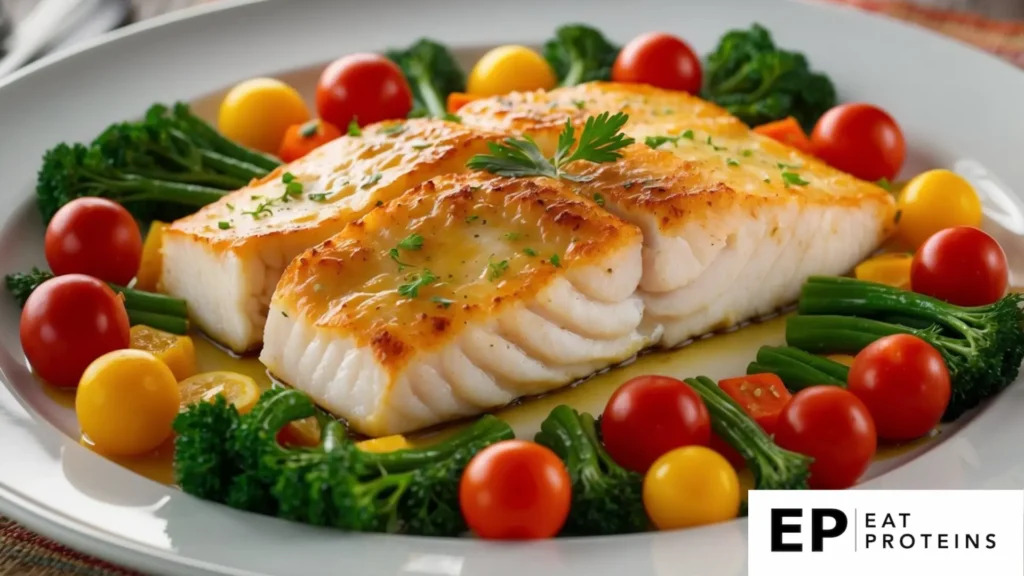
Baked cod with vegetables is a healthy dish that is low in residue, making it gentle on the digestive system. Cod is a light, flaky fish that pairs well with many vegetables, providing essential nutrients.
I find this recipe simple and quick to prepare. Here are the easy steps to make it:
- Preheat the oven to 400°F (200°C).
- Take a baking dish and lightly coat it with olive oil.
- Place cod fillets in the dish, and add your choice of vegetables, like zucchini or bell peppers.
- Drizzle with olive oil and season with salt and pepper.
- Cover the dish with aluminum foil to keep it moist.
- Bake for 15-20 minutes or until the fish flakes easily with a fork.
This dish is not just easy to make; it’s also versatile. You can modify the vegetables based on what you have on hand. I enjoy it because it’s healthy, filling, and takes very little time in the kitchen.
2. Grilled Chicken Breast with Carrots
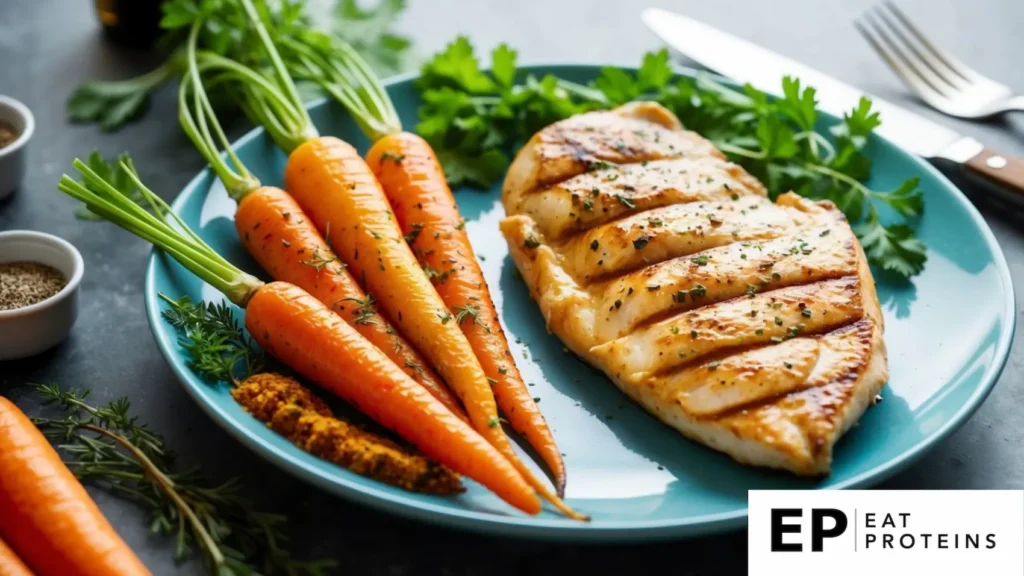
Grilled chicken breast with carrots is a simple and healthy dish. It is low in residue, making it suitable for those on a low residue diet. The chicken is a great source of protein, and carrots provide essential vitamins.
I find this recipe easy to make. It requires basic ingredients and minimal prep time.
To prepare this dish, follow these steps:
- Preheat the grill to medium-high heat.
- Season two chicken breasts with salt and pepper.
- Slice four to five baby carrots lengthwise for quicker cooking.
- Place the chicken and carrots on the grill.
- Cook for about 6-7 minutes on each side, until the chicken reaches an internal temperature of 165°F.
After grilling, let the chicken rest for a few minutes before serving. This helps keep the meat juicy. The carrots should be tender and slightly charred, adding flavor to the dish.
This recipe is straightforward and satisfying, perfect for anyone looking for healthy, low-residue meals.
3. Mashed Sweet Potatoes
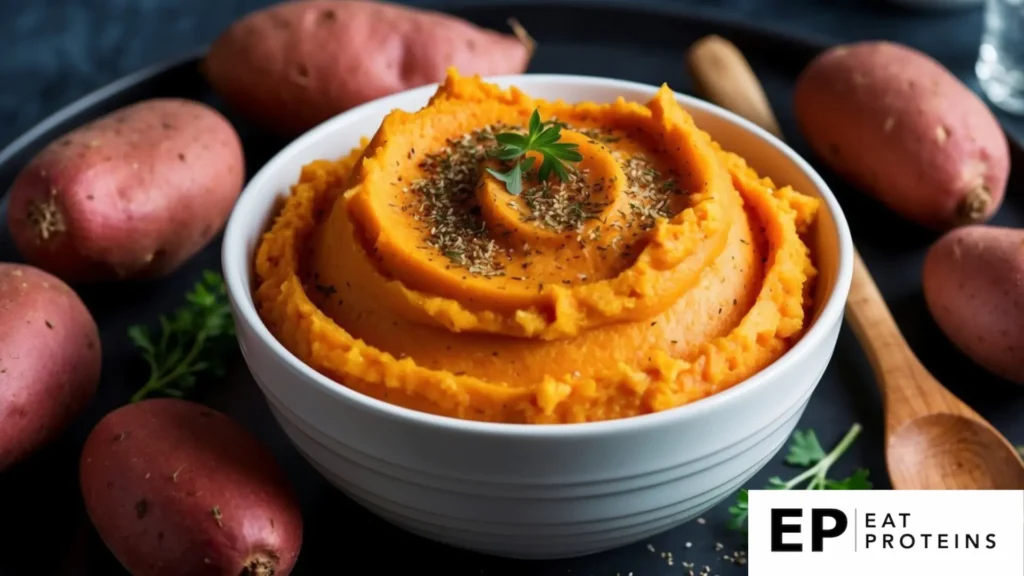
Mashed sweet potatoes are a tasty and simple side dish. They are low in residue, making them a great choice for my diet. Sweet potatoes are soft, creamy, and easy to digest.
To make mashed sweet potatoes, I start with 2 medium sweet potatoes. First, I peel and chop them into small pieces. This step helps them cook faster.
Next, I place the chopped sweet potatoes in a pot and cover them with water. I bring the water to a boil over medium heat. Once boiling, I cook the sweet potatoes for about 15-20 minutes. They should be soft enough to easily mash with a fork.
After draining the water, I mash the sweet potatoes in the pot. I often add a small amount of salt and a splash of milk for creaminess. Mixing until smooth makes them delicious and easy to eat.
This recipe is quick, taking around 30 minutes from start to finish. It’s nutritious and fits perfectly in my low residue meal plan.
4. White Rice with Steamed Asparagus
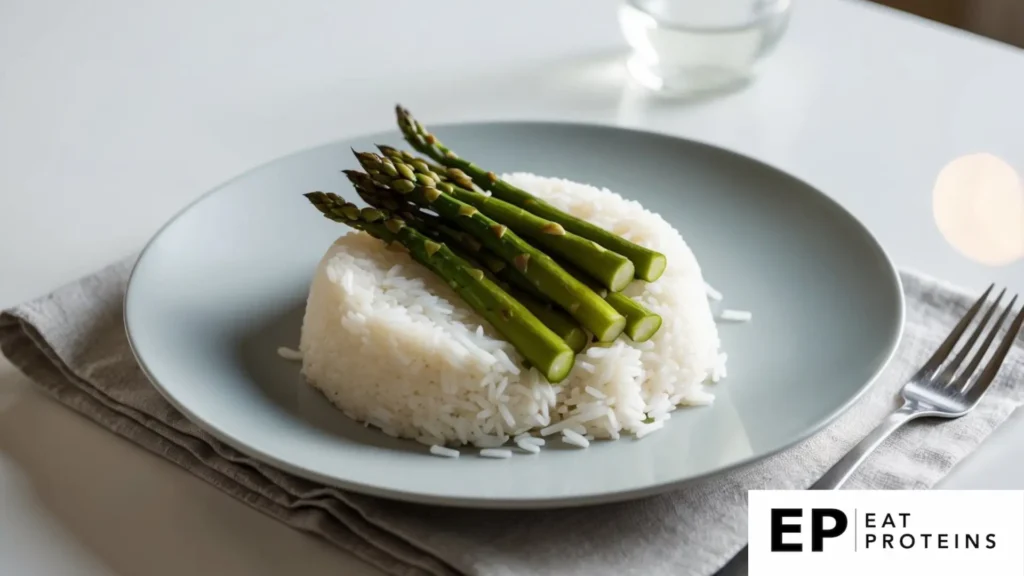
White rice is a great option for a low residue diet. It is easy to digest and provides energy. Steamed asparagus adds nutrients without adding fiber that might be hard to process.
To make this dish, I follow these simple steps. First, I rinse 1 cup of white rice in cold water until the water runs clear. This removes excess starch.
Next, I cook the rice. I combine the rinsed rice with 2 cups of water in a pot. I bring it to a boil, then cover it, reduce the heat, and let it simmer for about 15 minutes.
While the rice is cooking, I prepare the asparagus. I take about 1 cup of fresh asparagus, trim the ends, and place it in a steamer basket. I steam the asparagus for about 5-7 minutes, until it is bright green and tender.
Once both the rice and asparagus are done, I serve them together. I often add a pinch of salt for flavor. This dish is simple, nutritious, and fits well within a low residue diet plan.
5. Peach Smoothie
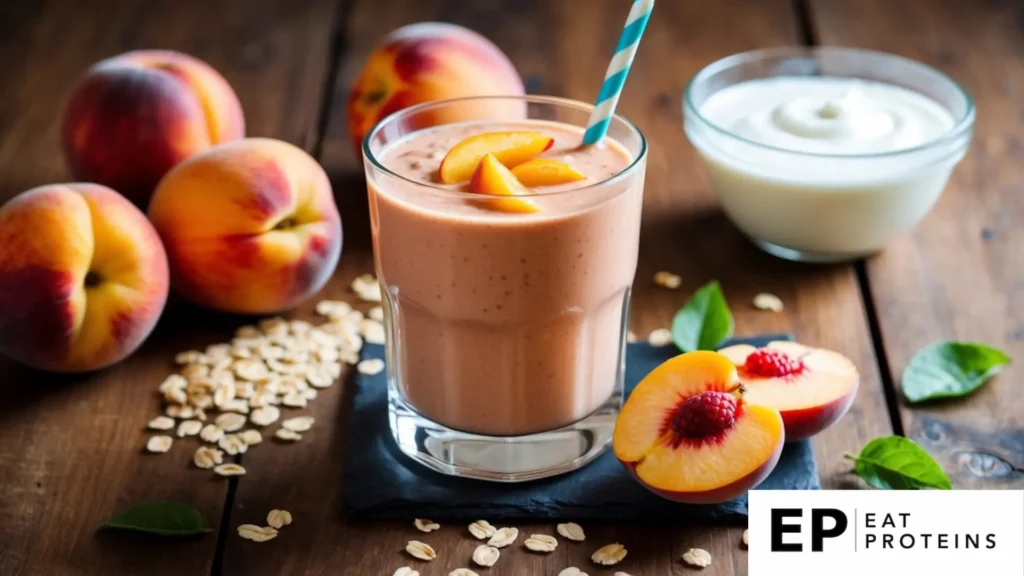
A peach smoothie is a simple, refreshing drink that works well on a low residue diet. It is made primarily with ripe peaches, which are soft and easy to digest. This smoothie provides a pleasant taste without irritating the digestive system.
Making a peach smoothie is quick and straightforward. I can whip it up in just a few minutes. Here’s how I do it:
- Gather the ingredients: 1 ripe peach, 1 cup of almond milk, and a tablespoon of honey (optional).
- Wash and slice the peach, removing the pit.
- Add the sliced peach, almond milk, and honey to a blender.
- Blend until smooth and creamy.
This recipe is versatile. If I want, I can add a few ice cubes for extra chill. The peach smoothie is not only tasty but also packed with nutrients, making it a perfect choice for my diet.
6. Turkey and Spinach Meatballs

Turkey and spinach meatballs are a great low residue option. They are made with lean ground turkey and fresh spinach, providing protein and nutrients without excess fiber.
I find these meatballs easy to prepare. They are perfect for quick meals or meal prep.
Here’s how I make them:
- Preheat the oven to 400°F (200°C).
- In a bowl, combine 1 pound of ground turkey, 1 cup of chopped spinach, 1/4 cup of grated Parmesan cheese, 1 egg, and seasonings like salt and pepper.
- Mix everything until well combined.
- Form the mixture into small meatballs, about 1 inch in diameter.
- Place the meatballs on a baking sheet and bake for 15-20 minutes.
I enjoy serving these meatballs with a light sauce or on their own. They are flavorful and satisfying while fitting into a low residue diet.
7. Avocado and Turkey Wrap

The Avocado and Turkey Wrap is a fresh and nutritious option for a low-residue diet. This wrap is simple to make and requires few ingredients. It combines lean turkey with creamy avocado, making it both tasty and satisfying.
To create this wrap, I gather the following ingredients: a whole wheat tortilla, sliced turkey, half a ripe avocado, lettuce, and a slice of cheese if desired.
Making the wrap is easy. First, I spread the sliced turkey evenly on the tortilla. Next, I slice the avocado and place it in the center. Then, I add fresh lettuce for crunch. If I want extra flavor, I can add a slice of cheese.
After that, I simply roll the tortilla tightly, tucking in the sides as I go. Finally, I slice the wrap in half for easier handling.
This recipe is not only quick to prepare but also packs valuable nutrients, making it a great choice for any meal.
8. Egg White Scramble with Spinach
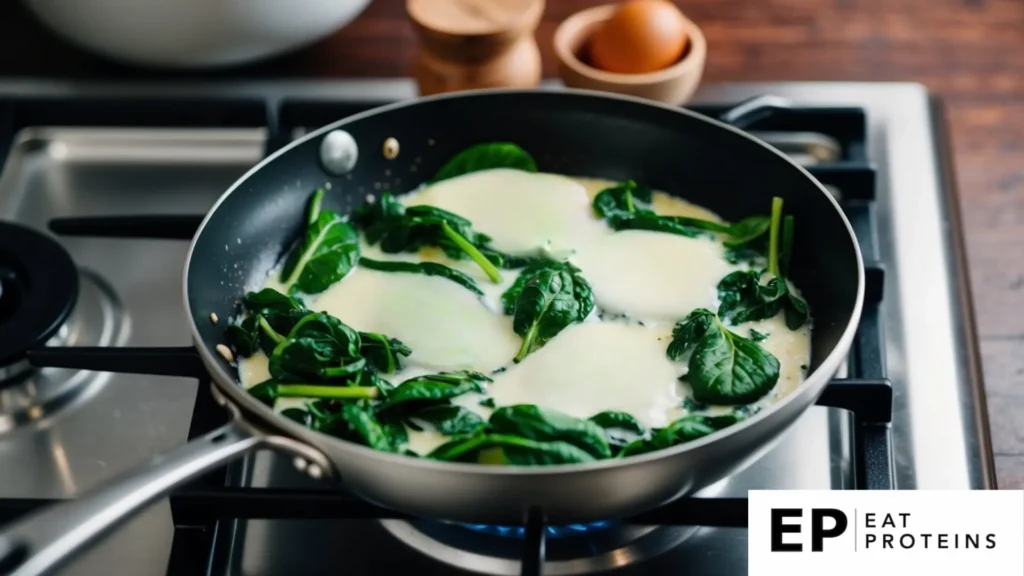
Egg white scramble with spinach is a healthy meal choice. It is low in calories and high in protein, making it ideal for a low residue diet. The dish is easy to prepare and packed with nutrients.
To make this dish, I start by gathering my ingredients: egg whites, fresh spinach, salt, and pepper.
- In a bowl, I whisk 4 egg whites until frothy.
- I heat a non-stick skillet over medium heat and add a teaspoon of olive oil.
- Once the oil is hot, I add 2 cups of fresh spinach and cook until wilted, about 2 minutes.
- Next, I pour the whisked egg whites over the spinach.
- I gently stir and cook for 3-4 minutes, until the eggs are fully set.
- Finally, I season with salt and pepper to taste.
This egg white scramble is not only simple but also filling. It offers a great start to my day with minimal fuss.
9. Banana Oat Pancakes
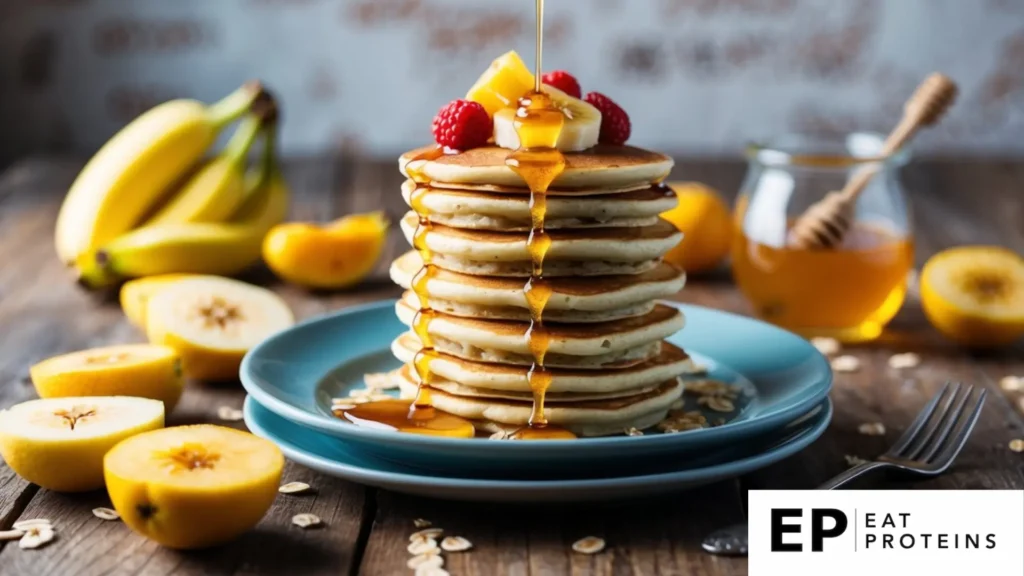
Banana oat pancakes are a simple and tasty option for a low residue diet. They are made with ripe bananas and oats, providing natural sweetness and a good source of fiber. These pancakes are easy to prepare and require just a few ingredients.
To make banana oat pancakes, I follow these steps:
- Gather Ingredients: I need 2 ripe bananas, 1 cup of rolled oats, and 2 eggs. Optionally, I can add a pinch of salt and cinnamon for flavor.
- Blend Ingredients: I mash the bananas in a bowl and then mix in the oats and eggs until smooth.
- Heat the Pan: I heat a non-stick skillet over medium heat and lightly grease it.
- Cook the Pancakes: I pour about 1/4 cup of the batter into the skillet for each pancake. I cook them for 2-3 minutes on each side, or until golden brown.
- Serve: I enjoy these pancakes warm, topped with a bit of honey or fresh fruit if I like.
These banana oat pancakes are not only easy to make but also delicious and satisfying for any meal of the day.
10. Poached Salmon with Cucumber Salad
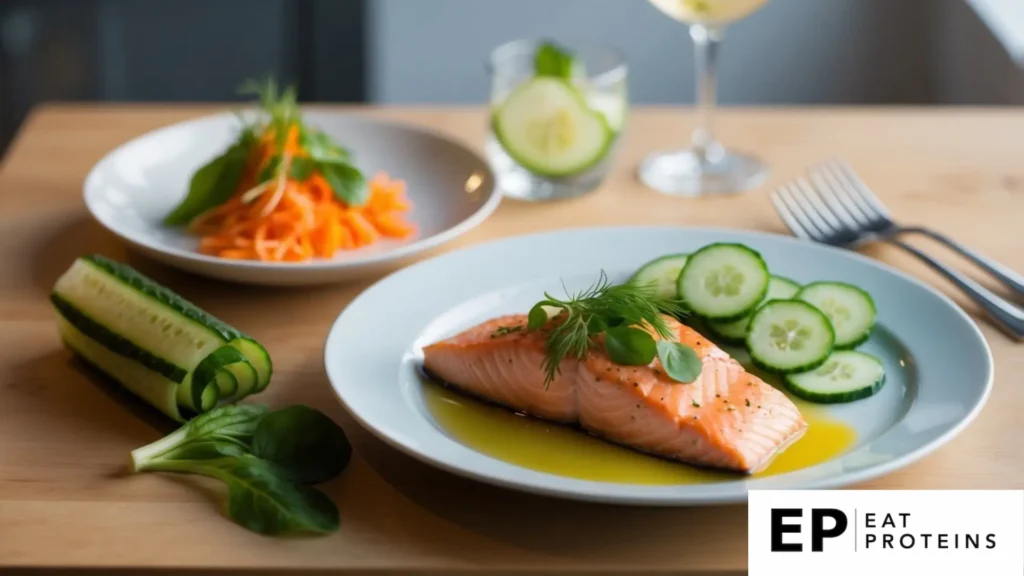
Poached salmon is a simple and healthy dish. It is cooked gently in water, which helps keep it moist. This recipe is low in residue, making it suitable for specific dietary needs.
To make this dish, I gather a few ingredients: salmon fillets, cucumbers, olive oil, salt, and pepper. Preparing it is quite easy.
- In a pot, bring water to a simmer.
- Add the salmon fillets skin-side down.
- Cook for about 10-12 minutes until the fish flakes easily.
For the cucumber salad, I slice cucumbers thinly and toss them in a bowl with olive oil, salt, and pepper. This adds a refreshing crunch to the meal.
The poached salmon pairs perfectly with the crisp cucumber salad. This dish is not only delicious but also quick to prepare. It is a great option for a light, satisfying meal.
What is a Low Residue Diet?
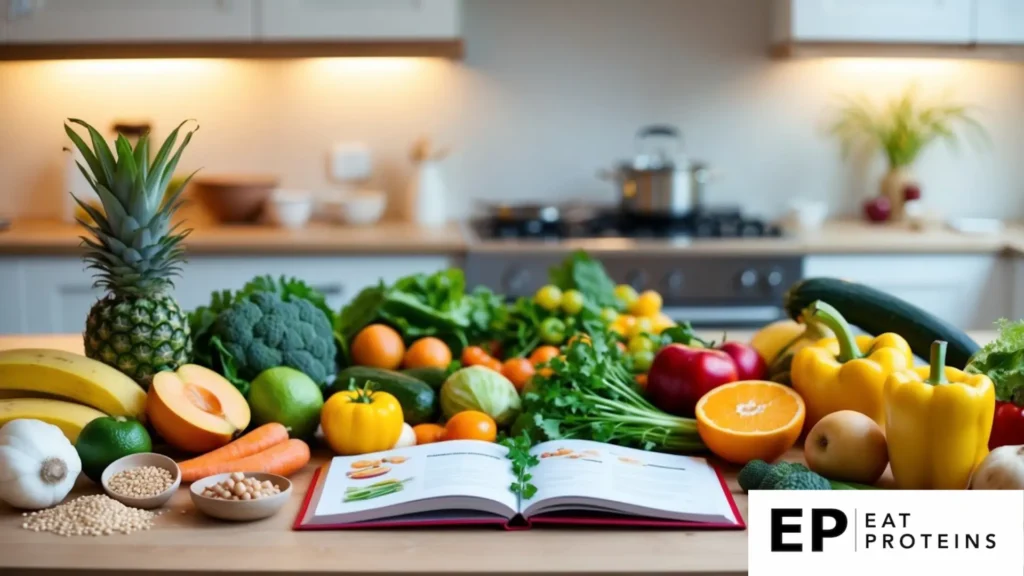
I find that understanding the basics of low residue diets is essential for anyone considering this approach. These diets can significantly impact digestive comfort and play a role in various medical conditions.
A low residue diet is designed to minimize the amount of undigested food in the intestines. By doing so, it reduces strain on the digestive system. This type of diet typically limits high-fiber foods, which can produce more stool.
The key components include:
- Allowed Foods: White bread, white rice, plain pasta, well-cooked vegetables, and tender meats.
- Restricted Foods: Whole grains, raw fruits and vegetables, nuts, seeds, and legumes.
This diet is often recommended before medical procedures like colonoscopy or during certain digestive disorders, as it allows for easier digestion and less bowel movement.
What are the Benefits of a Low Residue Diet?
There are several benefits to following a low residue diet, particularly for those with specific health conditions.
- Reduced Bowel Movement Frequency: This diet leads to softer stools, which can decrease urgency and frequency.
- Lower Risk of Gastrointestinal Irritation: By avoiding high-fiber and abrasive foods, it minimizes irritation in the digestive tract.
- Preparation for Medical Procedures: It’s beneficial before tests like colonoscopies, as it provides clearer views during the procedure.
In addition, many find that they experience less discomfort, bloating, and gas while on this diet. These points make it an attractive option for individuals needing relief from digestive issues.
What are the Key Ingredients for Low Residue Diet Recipes?
When following a low residue diet, choosing the right ingredients is crucial for managing digestive health. Certain foods can help minimize fiber and other substances that may irritate the gastrointestinal tract.
What are the Recommended Foods for a Low Residue Diet?
In a low residue diet, I often rely on foods that are easy to digest. Here are some recommended ingredients:
- Refined Grains: White bread, white rice, and plain pasta are easier on the stomach than whole grains.
- Lean Proteins: Skinless chicken, fish, and eggs provide necessary protein without excess fiber.
- Low-Fiber Vegetables: Carrots, zucchini, and spinach should be cooked until soft to aid digestion.
- Dairy: Mild cheeses, yogurt, and milk can be included, but I avoid high-fat options.
- Fruits: Bananas and applesauce work well, while whole fruits are generally avoided.
These foods help maintain nutrition while keeping fiber intake low.
What Foods Should be Avoided on a Low Residue Diet?
Certain foods can exacerbate gastrointestinal issues during a low residue diet. I avoid the following:
- Whole Grains: Brown rice and whole wheat products contain too much fiber.
- High-Fiber Fruits and Vegetables: Berries, broccoli, and leafy greens can cause discomfort.
- Legumes: Beans and lentils are high in fiber and difficult to digest.
- Nuts and Seeds: These can scratch the intestines and lead to irritation.
- Fatty Foods: Fried foods and high-fat dairy can worsen symptoms.
By steering clear of these ingredients, I can follow my diet more effectively and reduce the risk of discomfort.
How to Cook for a Low Residue Diet?
I can share some useful tips and techniques to help make low residue meals flavorful and easy to prepare. These methods focus on the best ways to cook and enhance the dishes.
What are the Best Preparation Methods for Low Residue Meals?
When preparing low residue meals, the cooking method is important. Opt for cooking techniques such as steaming, boiling, and baking. These methods help keep food soft and easy to digest.
- Steaming: Retains nutrients and keeps food moist.
- Boiling: Perfect for pasta and grains that are easy to digest.
- Baking: Great for proteins like chicken or fish, as it keeps them tender.
Always chop veggies and fruits into small pieces. This can help with easier digestion. Avoid frying, as it adds unhealthy fats and makes digestion harder.
How to Enhance Flavor in Low Residue Diet Meals?
Adding flavor to low residue meals can be simple. Use herbs and spices that don’t irritate the digestive system. Fresh ingredients can go a long way.
- Herbs: Use parsley, basil, or dill. They add freshness without bulk.
- Spices: Ginger and cumin can help without causing discomfort.
Consider using bouillon or homemade broths for added taste in soups and stews. Be mindful of seasonings and avoid those that are too spicy.
Focusing on your cooking methods and flavor enhancements makes low residue meals enjoyable and satisfying.
